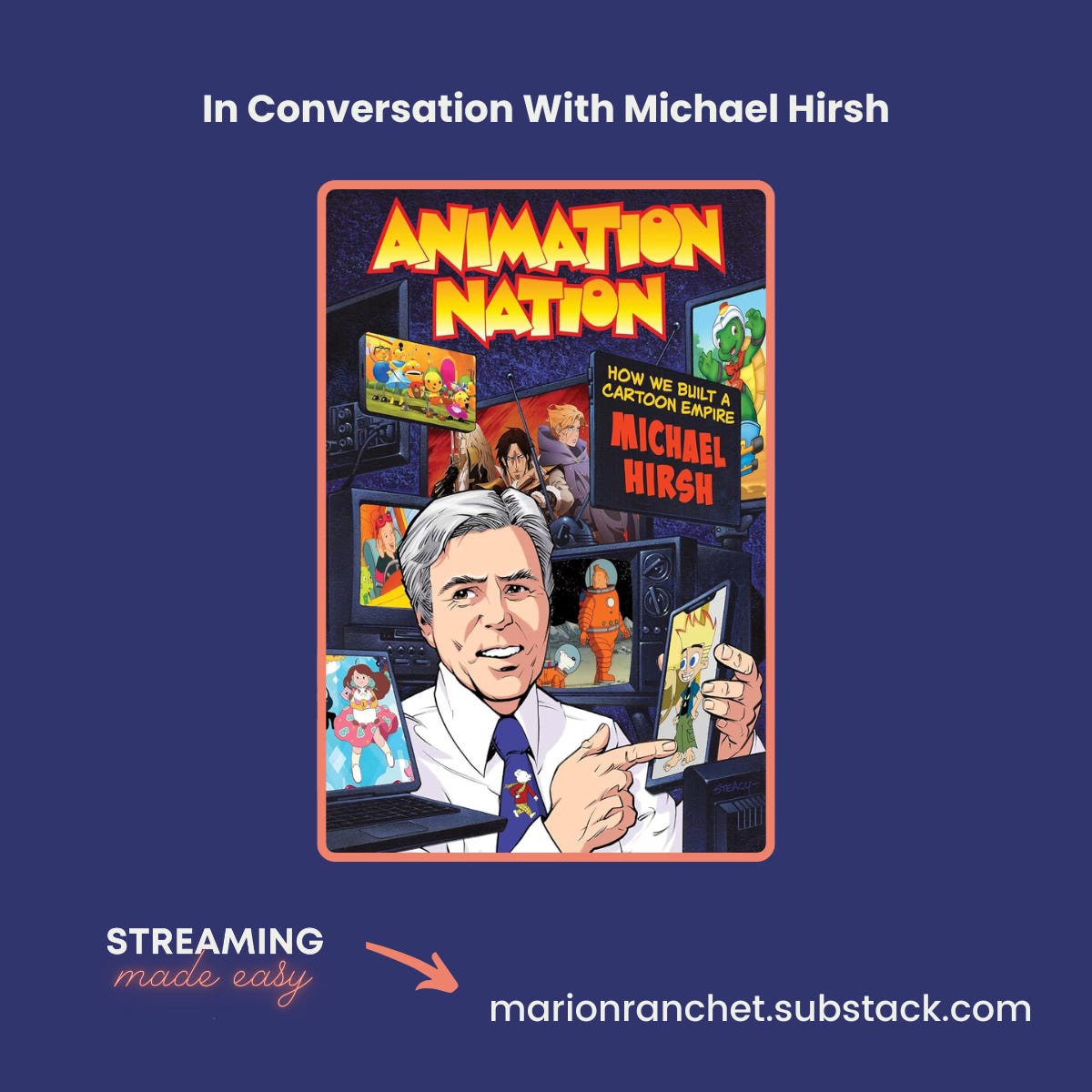Animation Nation: How We Built A Cartoon Empire
With Michael Hirsh
Couldn't go to Annecy for the Animation Film Festival? I’m bringing Annecy to you. This week on Streaming Made Easy, I've worked on two pieces for you:
→ An article on the platform kids streamers can’t do without to reach their target audience: Amazon Channels (Streaming Made Easy Premium members only).
→ An interview with industry mastodon, Michael Hirsh, who’s the opening keynote speaker for the 62th edition Annecy International Animation Film Festival. Grab a copy of his book “Animation Nation” to understand how he built a cartoon empire.
The interview has been edited for length and clarity.
For those who don’t know you, can you introduce yourself quickly?
Sure. I'm Michael Hirsch. I've recently written a book called Animation Nation about my career and life. Over the years, I’ve built several successful companies, including Nelvana, Cookie Jar (which merged into DHX, now WildBrain), and Wow Unlimited Media, which included Mainframe and Frederator.
What drew you into children's animation?
It was quite by accident. I started my career making experimental films during high school and college, deeply influenced by American underground cinema. We would shoot films and show them around New York. That DIY filmmaking culture has deeply influenced my approach to animation. At Nelvana and my other companies, we've always pushed the creative envelope. Today, platforms like YouTube offer a similar independent spirit.
Do you see today's DIY creator culture as comparable?
Absolutely. Back then, you needed your own studio and significant resources. Today, anyone can make animation or films with just a smartphone and free software. You don’t need a big studio or huge overhead anymore, which is transformative.
Can you share more about how your cartoon empire grew and how you navigated industry changes?
At Nelvana, we began small, just three friends and an assistant, to eventually scale up to nearly a thousand people, producing around 20 different series. To get there, we basically produced a lot of everything (from high contrast titles that would be used to put titles in films to opening title sequences for series), we would do whatever it took to pay the bills while making experimental films for kids.
By the time we sold Nelvana, cable/pay TV and home video had maxed out. Later at Cookie Jar, we capitalised on YouTube and streaming, which was essential in building the company, particularly after merging into WildBrain. We basically were able to become the largest supplier to streamers of cartoons. At Wow Unlimited Media, we focused on YouTube as a place to develop and launch new shows.
You emphasize DIY for young creators. Why?
Because the barriers to entry are so low. Young creators can start with platforms like YouTube or Roblox. Success today involves not just making great content but also building and engaging an audience. This is a fundamental shift from the past, where networks largely controlled visibility.
How has streaming changed the game?
Streamers, especially Netflix, have altered how content is produced and consumed. Unlike traditional broadcasters who might support long-running series, Netflix typically caps shows at around 26 episodes unless there’s extraordinary demand. They focus on subscriber growth rather than building long-term brands.
You've mentioned YouTube as pivotal. What's your take on the platform?
YouTube provides creators direct audience relationships unlike networks. Successful creators like Mr. Beast thrive by continuously engaging their audiences directly. It's about audience retention and growth, an essential skill today.
What about Sesame Street’s recent move to Netflix?
The very first animation I ever produced was for Sesame Street. I was busy making experimental films but I had a good friend who had worked with Jim Henson who gave him an order for five letters of the alphabet using plasticine animation. So my friend, who was fully employed, asked me if I could put together a team and he would teach us how to do plasticine animation. That's how I got into kids animation from experimental film.
Sesame Street had already landed on a streamer previously with HBO but they didn't get a big audience there. I don't think they'll get a big audience on Netflix but it's a great property and I'm glad that they found a home that's gonna give them the ability to continue.
Finally, your thoughts on AI in animation?
Embrace technology, always. AI can significantly speed up production and reduce costs, allowing creators to frequently release content, which is crucial in the streaming era. Ignoring technological shifts leaves creators behind. The key is adapting to leverage these tools effectively.
Thanks Michael. Looking forward to hearing great reviews of “Animation Nation”and hopefully chatting together again soon.



